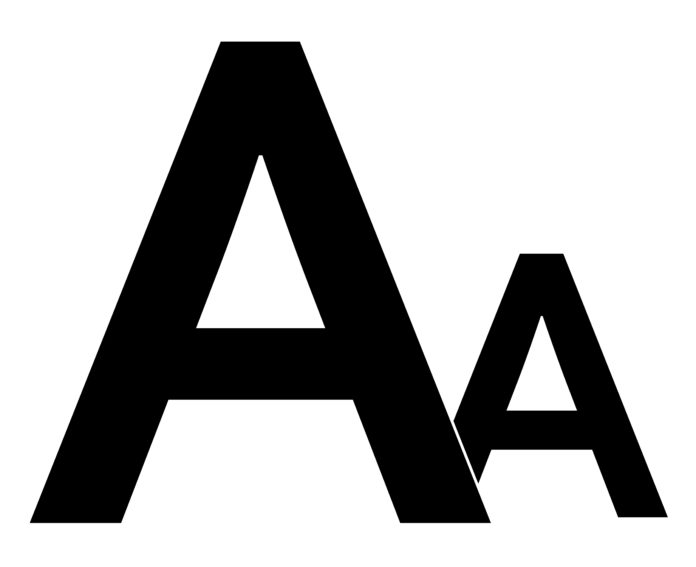Protest challenging the agency’s evaluation of the protester’s proposal is denied. The protester alleged the awardee had violated the solicitation’s page formatting requirements by using compressed line spacing in the text of its proposal. GAO found that the solicitation did not contain a requirement to use standard single line spacing, so the awardee’s use of compressed lines did not violate the solicitation. Moreover, GAO did not think the compressed lines gave the awardee a competitive advantage. The protester also alleged that the agency disparately evaluated proposals, but GAO found that the agency had reasonably evaluated dissimilar proposals. The protester further challenged weaknesses assigned to its proposal. GAO, however, determined that even if the agency had improperly assessed the weaknesses, the protester had not been prejudiced.
The Defense Intelligence Agency (DIA) posted a solicitation seeking intelligence support services. CACI, Inc. and The Buffalo Group (TBG) submitted proposals. DIA found that TBG was significantly superior to CACI under the solicitation’s technical/management factor, while CACI was moderately superior to TBG under the past performance factor. DIA awarded the contract to TBG, concluding that its technical superiority and lower price outweighed CACI’s past performance advantage. CACI protested.
CACI alleged that TBG violated the solicitation’s page formatting by manipulating font size. The solicitation required that the primary text of proposals had to be in 12 point font. But text used for diagrams and figures—tables, charts, graphs, and the like—could be 10 point font. CACI argued that TBG’s figures, particularly several one column tables, contained extensive narrative text in 10 point font that should have been included in the primary text and subject to the 12 point font limitation. Thus, CACI argued, TBG was able to include extra information in its proposals by squeezing text in into 10 point font tables.
GAO found that the solicitation allowed offerors to use tables, charts, diagrams, and figures wherever practical. The solicitation did not limit how the amount of narrative text that could be included with figures. What’s more, CACI’s proposal also employed tables and charts comprised extensively of narrative text. GAO could not conclude that TBG’s use of 10 point font violated the solicitation’s page formatting requirements.
CACI next alleged that TBG abused the solicitation’s formatting requirement by using compressed line spacing in its proposal. But GAO found that the solicitation did not contain a requirement for single-line spacing. Thus, TBG’s use of compressed lines did not violate the solicitation. Moreover, GAO did not believe the use of compressed lines provided TBG with a competitive advantage. Rather, the compressed line spacing was available to all offerors. The fact that TBG chose to use compressed line spacing and CACI did not provided no basis to sustain the protest.
Next, CACI alleged DIA disparately evaluated proposals by assigning TBG’s strengths but ignoring almost identical attributes in CACI’s proposal. GAO reasoned that CACI’s argument was premised on improper “apples to oranges comparison.” The record simply did not indicate that TBG and CACI proposed the same features and were given different ratings. Much of CACI’s argument focused verbiage in TBG’s proposal that it found “eerily similar” to language in its own proposal. GAO reasoned that this focus on verbiage was misplaced. Even if the offerors used similar language, the actual substance of their proposals differed significantly. Rather than unequally evaluating similar proposals, GAO found that DIA reasonably evaluated dissimilar proposals.
CACI also objected to two weaknesses assigned to it proposal. The first weakness concerned a lack of detail in CACI’s approach to satisfying PWS requirements. The second related to CACI’s approach to maintaining support during a reorganization. GAO, however, declined to decide whether these weaknesses were warranted because it found that CACI had not been prejudiced by the weaknesses. The SSA had explicitly stated in the award decision that those weaknesses had not affected the best value determination.
Finally, CACI challenged the best value determination, arguing that DIA mechanically counted strengths and weaknesses in each proposal and failed to reasonably consider qualitative value. GAO disagreed, finding that the SSA reasonably took into account the relative importance of the evaluation criteria and looked behind the criteria to reasonably consider the underlying qualitative merits of proposals.
CACI is represented by Craig S. King, Richard J. Webber, and Travis L. Mullaney of Arent Fox LLP. The intervenor, The Buffalo Group, is represented by David A. Edelstein, Laurence Schor, and Allison Geewax of Asmar Schor & McKenna as well as J. Hunter Bennett, Scott A. Freling, and Brooke G. Stanley of Covington & Burling LLP. The agency is represented by Major Michael C. Ahl, Max D. Houtz, Gregory A. Moritz, and Major Christopher M. Kovach of the Defense Intelligence Agency. GAO attorneys Louis A. Chiarella and Peter H. Tran participated in the preparation of the decision.




